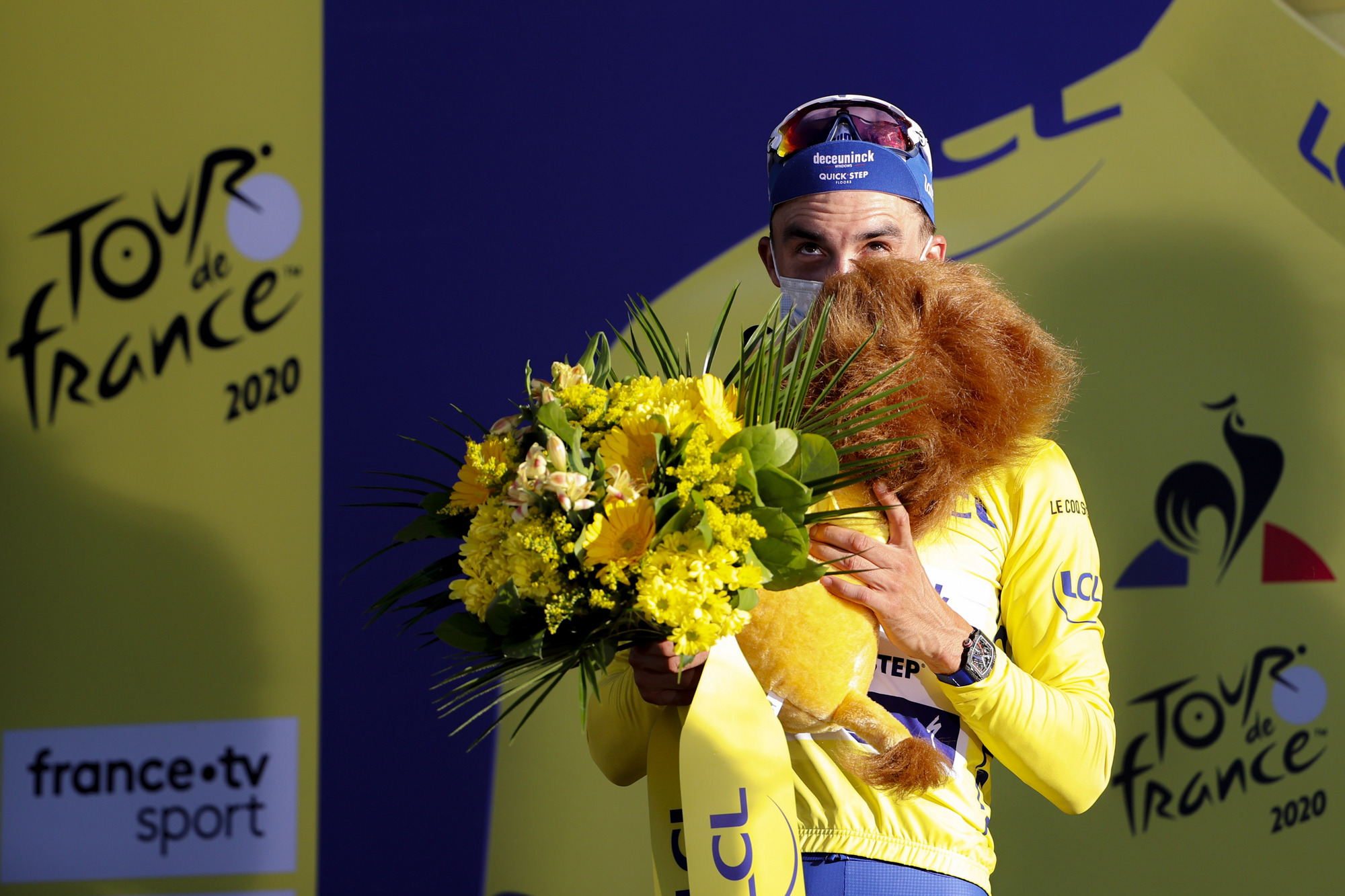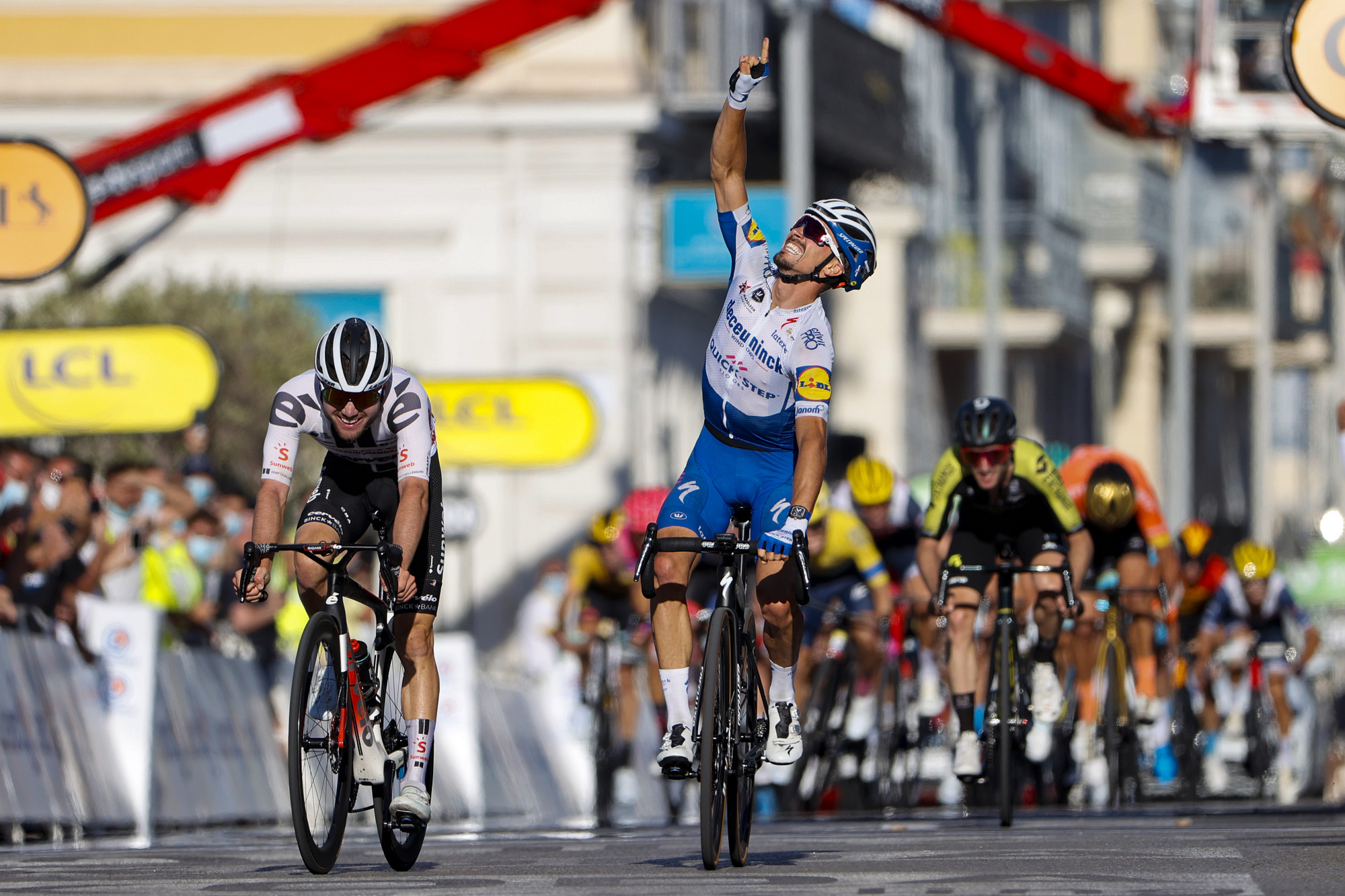Tour de France Stage 2 analysis: It’s déja-vu, all over again
Are we set to see a repeat in 2020 of Julian Alaphilippe's extraordinary run in the yellow jersey last year?

The German philosopher Friedrich Nietzsche lived near the village of Èze, in the hills above the Mediterranean to the east of Nice, between 1883 and 1884, and he often made the descent to sea level along a path that is now known as the Chemin de Nietzsche. His temperament was famously melancholic and nihilistic, though in the daily journey down from Èze and back again, he found inspiration in the warmth of the sun and the beautiful sea views. It was there he wrote the third part of his philosophical novel, ‘Thus Spake Zarathustra’, in which he theorised that men and women can find meaning in overcoming adversity.
In retracing the downward journey from Èze to sea level at Nice and winning the second stage of the 2020 Tour de France, Julian Alaphilippe (Deceuninck-QuickStep) overcame a little of his own adversity, dedicating his narrow victory over Marc Hirschi (Team Sunweb) to his father, who died earlier in the summer.
What’s more, it had been theorised, not without evidence supporting the case, that the Alaphilippe who lined up for this year’s Tour was not the Alaphilippe of 2019 - he’d been defeated at Milan-San Remo and the French championships, and bad luck had afflicted him not only at Strade Bianche, in the form of a reported six punctures, but as recently as yesterday, when he was one of many to crash on the slick roads of stage 1.
Alaphilippe just hadn’t looked as confident this year, as if he was searching not just for meaning but also for form. Even as late as his attack on the Col des Quatre Chemins, he still didn’t quite look the same as last year. On stage 2 of the 2019 Tour, he attacked on the penultimate climb en route to Épernay and nobody could live with him. This time around, he was first followed and closed down by 22-year-old Hirschi, then also by Adam Yates, who looked like he was finding the climb far less of an effort than the Frenchman. Yates even beat Alaphilippe to the bonus sprint at the summit of the climb.
Coming into the finish in Nice, Alaphilippe managed to manoeuvre himself onto Yates’s wheel as they came into the final kilometre, with a stiff breeze blowing in the riders’ faces. He’d pulled a similar trick on Wout Van Aert at Milan-San Remo, but the Belgian had been strong enough to hold him off by half a wheel that day. However, on a flat finish into a headwind, Adam Yates is no Wout Van Aert; Alaphilippe easily came past him, and Hirschi left his own lunge for the line until too late.

The Tour de France is built on hierarchies and structure. Just because this particular stage 2 had an unprecedented two first-category mountains, plus the two laps of the climb out of Nice, didn’t mean that it didn’t fall into a certain pattern, albeit with some differences. A break went, as it always does, but it was a little different from the usual trio or quartet of chancers and publicity hounds. With Peter Sagan, Toms Skujins, Michael Gogl, Kaspar Asgreen, Benoît Cosnefroy, Anthony Perez and Lukas Pöstlberger making up the break, it had serious firepower. Perhaps that’s why their lead never went above three and a half minutes.
The biggest change was the identity of the teams chasing after it, however. The Sky/Ineos mountain train of yore was nowhere to be seen; instead the latest iteration of the British team, the Ineos Grenadiers, lurked somewhere in the group behind UAE Emirates and Bora-Hansgrohe, who made a lot of the running on the Col de la Colmiane and Col de Turini. Then Jumbo-Visma took over, and even as late as the last climb still had six riders in the group of 50 riders who made up what was left of the peloton. Yesterday, Jumbo-Visma riders sat on the front of the peloton and neutralised the race because of wet road conditions; today they did so to make a statement of intent.
Get The Leadout Newsletter
The latest race content, interviews, features, reviews and expert buying guides, direct to your inbox!
However, Jumbo-Visma haven’t quite cracked the implacable mountain train act yet. On the Col des Quatre Chemins, Tom Dumoulin steered his front wheel into the back wheel of Michal Kwiatkowski and crashed. Initially his teammate George Bennett forged on at the front of the group, with an expressionless Primoz Roglic in his wheel, and it looked as if the Jumbo hierarchy had been set there and then.
But Bennett and Roglic relented, allowing Dumoulin back on but also left the group without a team willing to lead. It was enough to allow Alaphilippe, Yates and Hirschi to keep their lead at 20 seconds or so, which turned out to be just enough to enable them to sprint for the stage honours.
Alaphilippe’s attack on the Col des Quatre Chemins looked like it might be based more on muscle memory and nostalgia than actual ambition, and he faced the prospect of having to hold a 20-second lead into the teeth of a strong wind. After the year he’s had, it looked like madness to even try. But as Nietzsche once said, “There is always some reason in madness.”
Last year, Alaphilippe went into the yellow jersey on stage 2 and insisted that his horizons stretched no further than the next day. But it was only when the Tour tilted above 2,000 metres on repeated occasions in the Alps that his rivals finally got him out of the race lead.
Until today, the Alaphilippe of 2020 didn’t quite resemble the Alaphilippe of 2019, and it’s true that there are 19 more stages to come, and 34 riders are within 17 seconds of him. But there’s a sudden sense that there’s no reason a route which looks very well designed for a rider of Alaphilippe’s qualities might not see him be equally hard to beat this year.
As part of our midsummer sale a subscription to Procycling magazine currently costs £5 for the first five issues (UK offer only) – that's only £1 per issue. After the first five issues, you will pay £17.52 every quarter.
Edward Pickering is Procycling magazine's editor. He graduated in French and Art History from Leeds University and spent three years teaching English in Japan before returning to do a postgraduate diploma in magazine journalism at Harlow College, Essex. He did a two-week internship at Cycling Weekly in late 2001 and didn't leave until 11 years later, by which time he was Cycle Sport magazine's deputy editor. After two years as a freelance writer, he joined Procycling as editor in 2015. He is the author of The Race Against Time, The Yellow Jersey Club and Ronde, and he spends his spare time running, playing the piano and playing taiko drums.